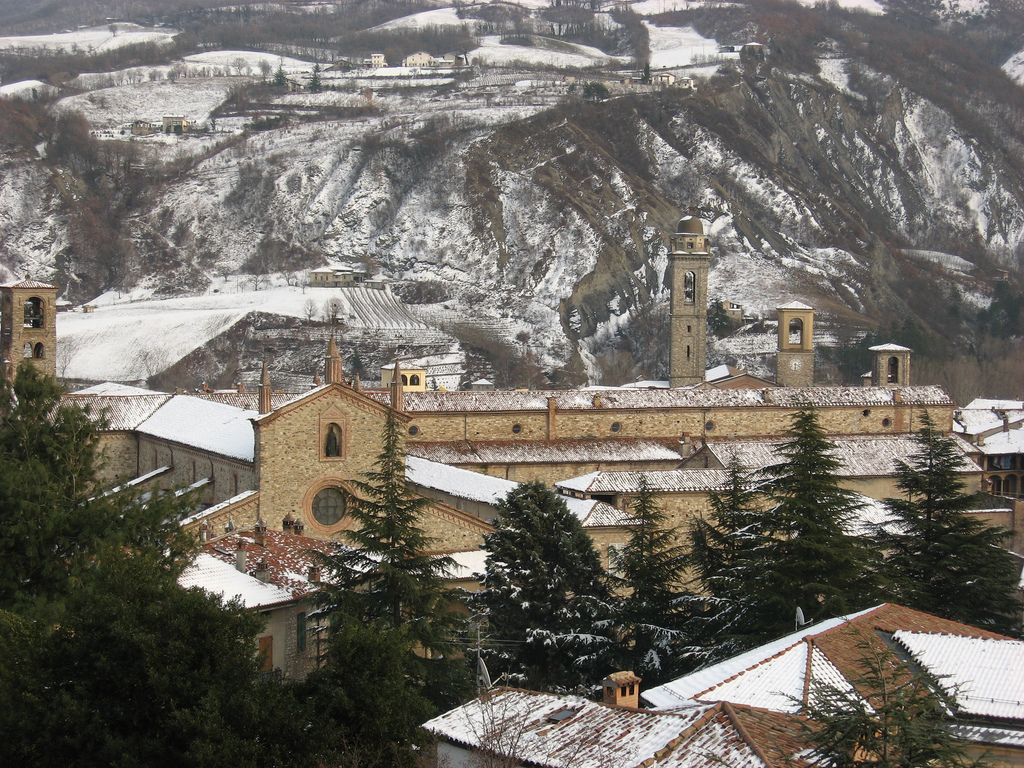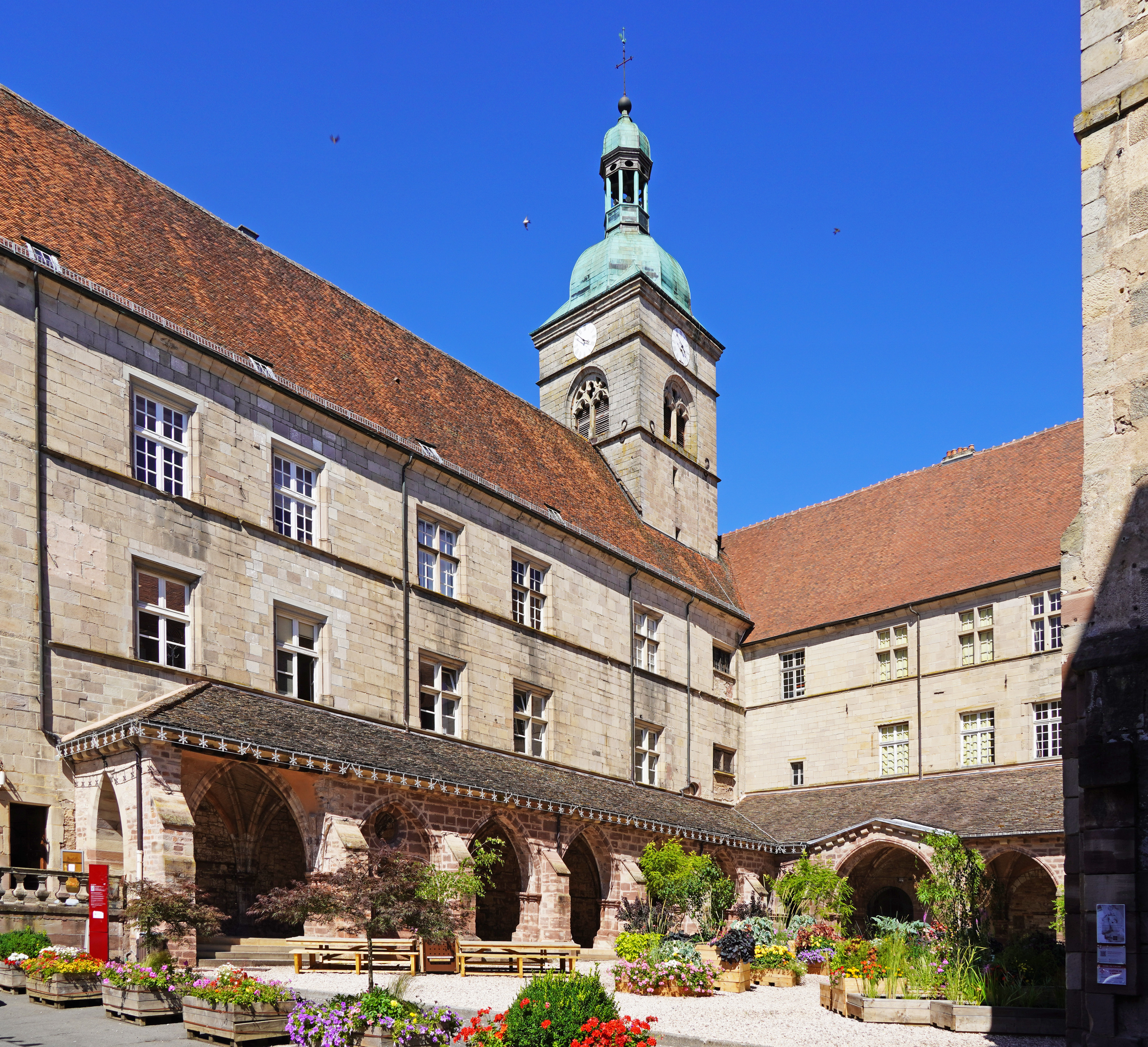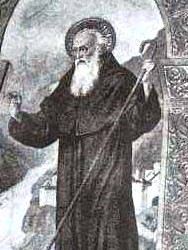|
Columbanus
Columbanus ( ga, Columbán; 543 – 21 November 615) was an Irish missionary notable for founding a number of monasteries after 590 in the Frankish and Lombard kingdoms, most notably Luxeuil Abbey in present-day France and Bobbio Abbey in present-day Italy. Columbanus taught an Irish monastic rule and penitential practices for those repenting of sins, which emphasised private confession to a priest, followed by penances levied by the priest in reparation for the sins. Columbanus is one of the earliest identifiable Hiberno-Latin writers. Sources Most of what we know about Columbanus is based on Columbanus' own works (as far as they have been preserved) and Jonas of Susa's ''Vita Columbani'' (''Life of Columbanus''), which was written between 639 and 641. Jonas entered Bobbio after Columbanus' death but relied on reports of monks who still knew Columbanus. A description of miracles of Columbanus written by an anonymous monk of Bobbio is of much later date.O'Hara, Alexan ... [...More Info...] [...Related Items...] OR: [Wikipedia] [Google] [Baidu] |
Bobbio Abbey
Bobbio Abbey (Italian: ''Abbazia di San Colombano'') is a monastery founded by Irish Saint Columbanus in 614, around which later grew up the town of Bobbio, in the province of Piacenza, Emilia-Romagna, Italy. It is dedicated to Saint Columbanus. It was famous as a centre of resistance to Arianism and as one of the greatest libraries in the Middle Ages. The abbey was dissolved under the French administration in 1803, although many of the buildings remain in other uses. History Foundation The background to the foundation of the abbey was the Lombard invasion of Italy in 568. The Lombard king Agilulf married the devout Roman Catholic Theodelinda in 590 and under her influence and that of the Irish missionary Columbanus, he was persuaded to accept conversion to Christianity. As a base for the conversion of the Lombard people Agilulf gave Columbanus a ruined church and wasted lands known as Ebovium, which, before the Lombards seized them, had formed part of the lands of the papacy. ... [...More Info...] [...Related Items...] OR: [Wikipedia] [Google] [Baidu] |
Hiberno-Scottish Mission
The Hiberno-Scottish mission was a series of expeditions in the 6th and 7th centuries by Gaelic missionaries originating from Ireland that spread Celtic Christianity in Scotland, Wales, England and Merovingian France. Celtic Christianity spread first within the Kingdom of Dál Riata, within Ireland and the western coast of Scotland. Since the 8th and 9th centuries, these early missions were called 'Celtic Christianity'. There is dispute over the relationship of the Hiberno-Scottish mission to Catholic Christianity. Catholic sources claim it functioned under the authority of the Holy See, while Protestant historians highlight conflicts between Celtic and Catholic clergy. There is agreement that the mission was not strictly coordinated. Etymology '' Hibernia'' is the Latin name for the island of Ireland. The Latin term ''' Scotti refers to the Gaelic-speaking people of Ireland and western Scotland. From this term, developed an alternate Latin name for the territory in whi ... [...More Info...] [...Related Items...] OR: [Wikipedia] [Google] [Baidu] |
Saint Gall
Gall ( la, Gallus; 550 646) according to hagiographic tradition was a disciple and one of the traditional twelve companions of Columbanus on his mission from Ireland to the continent. Deicolus was the elder brother of Gall. Biography The fragmentary oldest ''Life'' was recast in the 9th century by two monks of Reichenau, enlarged in 816–824 by Wettinus, and about 833–884 by Walafrid Strabo, who also revised a book of the miracles of the saint. Other works ascribed to Walafrid tell of Saint Gall in prose and verse. Gall's origin is a matter of dispute. According to his 9th-century biographers in Reichenau, he was from Ireland and entered Europe as a companion of Columbanus. The Irish origin of the historical Gallus was called into question by Hilty (2001), who proposed it as more likely that he was from the Vosges or Alsace region. Schär (2010) proposed that Gall may have been of Irish descent but born and raised in the Alsace. According to the 9th-century hagiogra ... [...More Info...] [...Related Items...] OR: [Wikipedia] [Google] [Baidu] |
Luxeuil Abbey
Luxeuil Abbey (), the ''Abbaye Saint-Pierre et Saint-Paul'', was one of the oldest and best-known monasteries in Burgundy, located in what is now the département of Haute-Saône in Franche-Comté, France. History Columbanus It was founded circa 590 by the Irish missionary Saint Columbanus. Columbanus and his companions first settled in cells at Annegray, in the commune of Voivre, Haute-Saône. Looking for a more permanent site for his community, Columbanus decided upon the ruins of a well-fortified Gallo-Roman settlement, ''Luxovium'', about eight miles away. The Roman town had been ravaged by Attila in 451, and was now buried in the dense overgrown woodland that had filled the abandoned site over more than a century, but the place still had the advantage of the thermal baths ("constructed with unusual skill", according to Columbanus' early biographer, Jonas of Bobbio) down in the valley, which still give the town its name of Luxeuil-les-Bains. Jonas described it further: "The ... [...More Info...] [...Related Items...] OR: [Wikipedia] [Google] [Baidu] |
Bobbio
Bobbio ( Bobbiese: ; lij, Bêubbi; la, Bobium) is a small town and commune in the province of Piacenza in Emilia-Romagna, northern Italy. It is located in the Trebbia River valley southwest of the town Piacenza. There is also an abbey and a diocese of the same name. Bobbio is the administrative center of the ''Unione Montana Valli Trebbia e Luretta''. Overview Bobbio is located in the heart of Val Trebbia, a valley described by Ernest Hemingway as "the most beautiful in the world". The town is nestled at the foot of Monte Penice, above sea level, on the left bank of the river Trebbia. Its history is identified with the Abbey founded in 614 by St. Columbanus an Irish missionary, and as a result, it became one of the principal centres of religious culture in medieval Italy, home to a library and basilica. The possessions of the abbey in the Lombard and Carolingian eras spanned the north of Italy. Bobbio is a coveted tourist destination known for its history of art and culture, ... [...More Info...] [...Related Items...] OR: [Wikipedia] [Google] [Baidu] |
Jonas Of Bobbio
Jonas of Bobbio (also known as Jonas of Susa) (Sigusia, now Susa, Italy, 600 – after 659 AD) was a Columbanian monk and a major Latin monastic author of hagiography. His ''Life of Saint Columbanus'' is "one of the most influential works of early medieval hagiography."O'Hara, Alexander. ''Jonas of Bobbio and the Legacy of Columbanus'', Oxford Studies in Late Antiquity (New York) Biography  Jonas was born in Susa, Piedmont. In 618, Jonas arr ...
Jonas was born in Susa, Piedmont. In 618, Jonas arr ...
[...More Info...] [...Related Items...] OR: [Wikipedia] [Google] [Baidu] |
Deicolus
Deicolus (also Déicole, Dichuil, Deel, Deicola, Deicuil, Delle, Desle, Dichul, Dicuil, Domgall; c. 530 – January 18, 625) is venerated as a saint by both the Catholic Church and the Orthodox Church as an East–West Schism, pre-Schism, Western saint. He was an elder brother of Saint Gall. Life Born in Leinster, Deicolus and his brother, Gall, studied at Bangor Abbey in County Down. He was selected to be one of the twelve followers to accompany Columbanus on his missionary journey. After a short stay in Great Britain in 576 he journeyed to Gaul and laboured with Columbanus in Austrasia and Burgundy. When Columbanus was expelled by Theuderic II, in 610, Deicolus, then eighty years of age, determined to follow his master, but was forced, after a short time, to give up the journey, and remained behind alone, establishing a hermitage at a nearby church dedicated to Saint Martin in a place called Lutre, or Lure, in the Diocese of Besançon, to which he had been directed by a swi ... [...More Info...] [...Related Items...] OR: [Wikipedia] [Google] [Baidu] |
Comgall
Saint Comgall (c. 510–520 – 597/602), an early Irish saint, was the founder and abbot of the great Irish monastery at Bangor in Ireland. MacCaffrey,James (1908). " St. Comgall". In ''Catholic Encyclopedia''. 4. New York: Robert Appleton Company. Life Comgall was born sometime between 510 and 520 in Dál nAraidi, Ulster according to the Irish annals near the place now known as Magheramorne in present-day County Antrim. Comgall's father was Setna, a Pictish warrior; his mother's name was Briga. After serving as a soldier in his early life, he was educated under Fintan of Clonenagh and also studied under Finnian of Movilla, Mobhí Clárainech at Glasnevin, and Ciarán of Clonmacnoise."History of Bangor Abbey", Parish of Bangor Abbey He was ordained deacon and priest by Bishop Lugidius, either ... [...More Info...] [...Related Items...] OR: [Wikipedia] [Google] [Baidu] |
Bangor Abbey
Bangor Abbey was established by Saint Comgall in 558 in Bangor, County Down, Northern Ireland and was famous for its learning and austere rule. It is not to be confused with the slightly older abbey in Wales on the site of Bangor Cathedral. History Foundation Comgall founded the monastery at Bangor about 558 A.D. in the County Down, on the southern shore of Belfast Lough. The ancient Annals differ about the exact year, giving various dates between 552 and 559. The earliest, the Annals of Tighernach, and the Annals of Innisfallen, give 558 A.D. as the date of the foundation.Hamilton, James. "A Short History of Bangor Abbey", ''Bangor Abbey Through Fifteen Centuries'' The name was sometimes written "Beannchor". The place was also called the "Vale of Angels", becaus ... [...More Info...] [...Related Items...] OR: [Wikipedia] [Google] [Baidu] |
Saint Attala
Atala or Attala (died 622) was a disciple of Columbanus and his successor as abbot of Bobbio from 615. Attala was originally from Burgundy, and first became a monk at the abbey of Lérins. Displeased with the loose discipline prevailing there, he instead entered the abbey of Luxeuil, which had just been founded by Columbanus. When the latter was expelled from Luxeuil by King Theuderic II, Attala would have succeeded him as abbot, but preferred to follow him into exile. They settled on the banks of the river Trebbia, a little northeast of Genoa, where they together founded Bobbio. After the Columbanus' death in 615, Attala succeeded him as abbot. He and his monks suffered many hardships at the hands of King Arioald, who was an Arian and not a Catholic. As abbot, Attala insisted on strict discipline and when a large number of his monks rebelled, declaring his discipline too rigorous, he permitted them to leave the monastery. According to Attala's biographer, Jonas, when some of th ... [...More Info...] [...Related Items...] OR: [Wikipedia] [Google] [Baidu] |
Hiberno-Latin
Hiberno-Latin, also called Hisperic Latin, was a learned style of literary Latin first used and subsequently spread by Irish monks during the period from the sixth century to the tenth century. Vocabulary and influence Hiberno-Latin was notable for its curiously learned vocabulary. While neither Hebrew nor Greek was widely known in Europe during this period, odd words from these sources, as well as from Irish and British sources, were added to Latin vocabulary by these authors. It has been suggested that the unusual vocabulary of the poems was the result of the monks learning Latin words from dictionaries and glossaries which did not distinguish between obscure and common words; unlike many others in Western Europe at the time, the Irish monks did not speak a language descended from Latin. During the sixth and seventh centuries AD, Irish monasticism spread through Christian Europe; Irish monks who founded these monasteries often brought Hiberno-Latin literary styles with t ... [...More Info...] [...Related Items...] OR: [Wikipedia] [Google] [Baidu] |
Columba
Columba or Colmcille; gd, Calum Cille; gv, Colum Keeilley; non, Kolban or at least partly reinterpreted as (7 December 521 – 9 June 597 AD) was an Irish abbot and missionary evangelist credited with spreading Christianity in what is today Scotland at the start of the Hiberno-Scottish mission. He founded the important abbey on Iona, which became a dominant religious and political institution in the region for centuries. He is the patron saint of Derry. He was highly regarded by both the Gaels of Dál Riata and the Picts, and is remembered today as a Catholic saint and one of the Twelve Apostles of Ireland. Columba studied under some of Ireland's most prominent church figures and founded several monasteries in the country. Around 563 AD he and his twelve companions crossed to Dunaverty near Southend, Argyll, in Kintyre before settling in Iona in Scotland, then part of the Ulster kingdom of Dál Riata, where they founded a new abbey as a base for spreading Celtic Christ ... [...More Info...] [...Related Items...] OR: [Wikipedia] [Google] [Baidu] |








